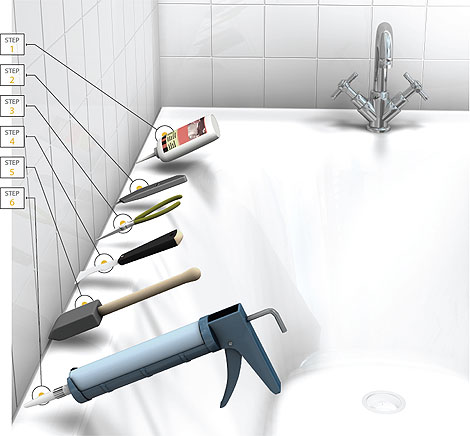











Your Custom Text Here
Caulking fills gaps and cracks to keep air, water, rodents and bugs out of your home. Caulking is typically done around windows, doors, pipes, plumbing and wherever there's a break in siding.
Caulk can refer either to the caulking substance or to the process of applying it. Caulking as a term has spread to the building trade, meaning the activity of closing up joints and gaps in buildings. The function of caulking is to provide thermal insulation, control water penetration and noise mitigation.
This is mostly done with ready-mixed construction chemicals sold as caulk such as silicone, polyurethane, polysulfide, sylil-terminated-polyether or polyurethane and acrylic sealant. Unlike construction caulk, which is applied where no building movement is expected, a sealant is made of elastomeric materials that typically allow movement of 25% to 50% of the width of the joint.
According to the Consumer Federation of America, sealing unwanted leaks around homes is an excellent way to cut home energy costs and decrease the household carbon footprint.
Also, sealing cracks and crevices around homes puts less strain on home appliances and can save time, money and hassle by preventing major repairs. Additionally, increasing the lifetime of homes and appliances also puts less waste and pollution into landfills.
Caulking fills gaps and cracks to keep air, water, rodents and bugs out of your home. Caulking is typically done around windows, doors, pipes, plumbing and wherever there's a break in siding.
Caulk can refer either to the caulking substance or to the process of applying it. Caulking as a term has spread to the building trade, meaning the activity of closing up joints and gaps in buildings. The function of caulking is to provide thermal insulation, control water penetration and noise mitigation.
This is mostly done with ready-mixed construction chemicals sold as caulk such as silicone, polyurethane, polysulfide, sylil-terminated-polyether or polyurethane and acrylic sealant. Unlike construction caulk, which is applied where no building movement is expected, a sealant is made of elastomeric materials that typically allow movement of 25% to 50% of the width of the joint.
According to the Consumer Federation of America, sealing unwanted leaks around homes is an excellent way to cut home energy costs and decrease the household carbon footprint.
Also, sealing cracks and crevices around homes puts less strain on home appliances and can save time, money and hassle by preventing major repairs. Additionally, increasing the lifetime of homes and appliances also puts less waste and pollution into landfills.